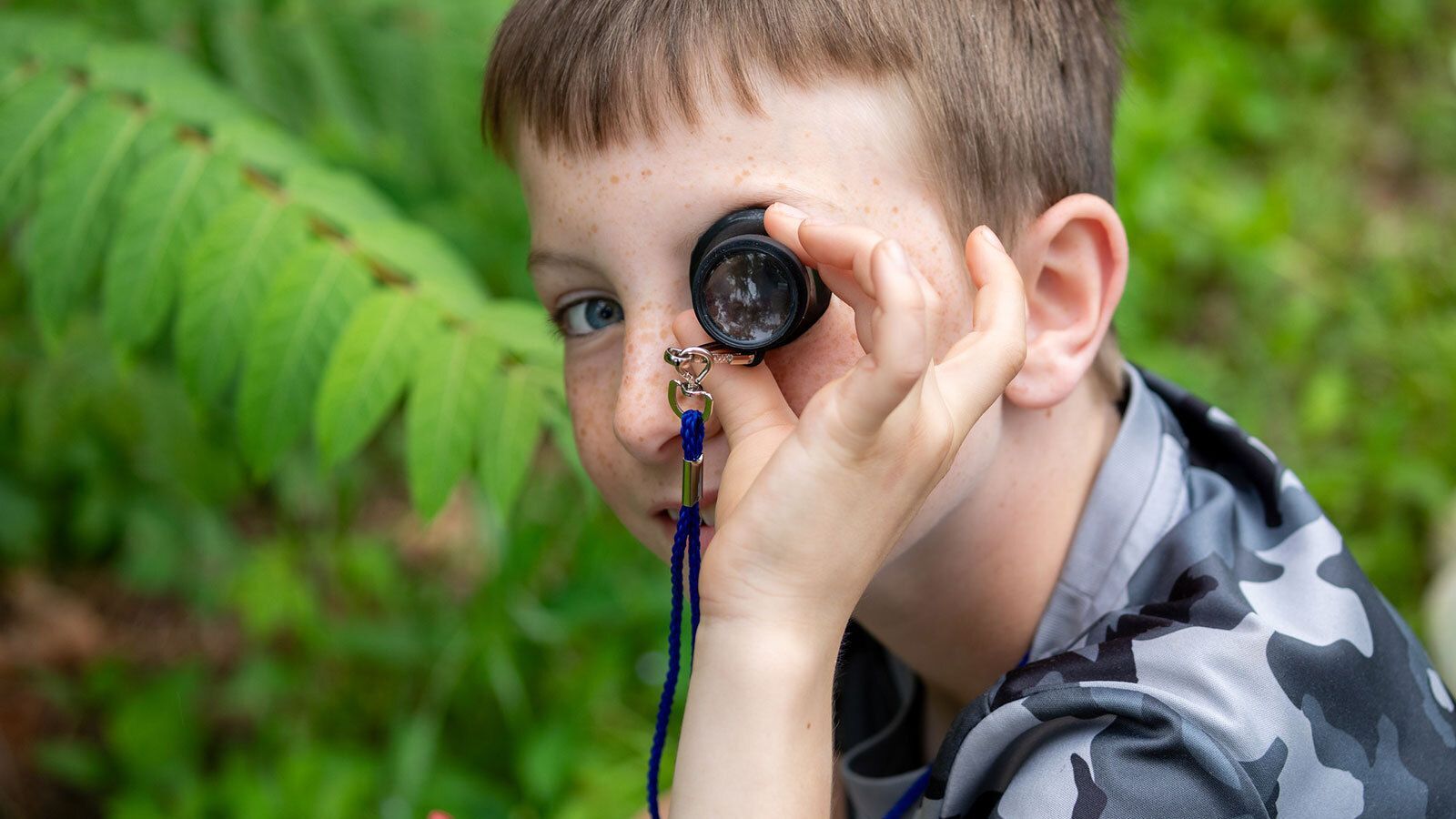Education programs for wildlife are magical. But what does that mean?
First, close your eyes. Next, listen to the video. Ok, it is a little tricky to close your eyes and click on the video but give it a try.
What do you hear? How does it make you feel?
Now picture a group of children sitting in a circle listening to the howl of Red Wolves. When asked how they feel, some are afraid, most are happy and some feel like they are sitting next to the wolves. This is how we start every class, even adult classes, on Red Wolves.
And why Red Wolves? Because they are the most endangered wild animal in the US. A great place to start! And thanks to the Wolf Conservation Center for the fantastic video!
With less than 20 left in the wild, in the whole world, we want to teach our next generation why they (and we) should save them just like our country did for the bald eagle. To learn a bit more about these magnificent animals that mate for life and are fabulous parents, read our blog Seven Impressive Reasons We Love Endangered Red Wolves.
Art Education Paired with Wildlife
Using art educational programs to teach kids about wildlife is a winning combination. The kids learn about an animal or habitat and then get to do an art project to reinforce the learning! Just look at these kids!
Using Art Education for Habitat
One of the biggest things we learned early on — and it might sound obvious — is that there’s no wildlife without habitat. Animals need shelter, food, water, and space to survive. But as humans, we’ve been taking over all four. That’s why one of the most important parts of our classes is helping kids understand why saving habitats matters.
And where do we start? With plants! Especially native ones. Native plants play a huge role in keeping ecosystems healthy. For example, we teach kids that baby birds need caterpillars to grow strong in their first few weeks. But here’s the catch — most caterpillars only eat native plants. So, if we lose those plants, we lose the caterpillars… and then, no baby birds.
Polk County Schools asked us to start an After School Program for their four elementary schools and the middle school. For our very first program, we partnered with the Gardening for Life Project, which brought Doug Tallamy to speak in Tryon on March 4, 2023.
To quote their website, Doug says, “we are losing healthy biodiverse habitats and we can begin to reverse that by taking simple steps right in our own yards”. We say, what better way than to plant native seeds?
Each student decorates several seed packets, which will be handed out for free at the Tallamy event. Then they get to take home a packet to plant in their own gardens.
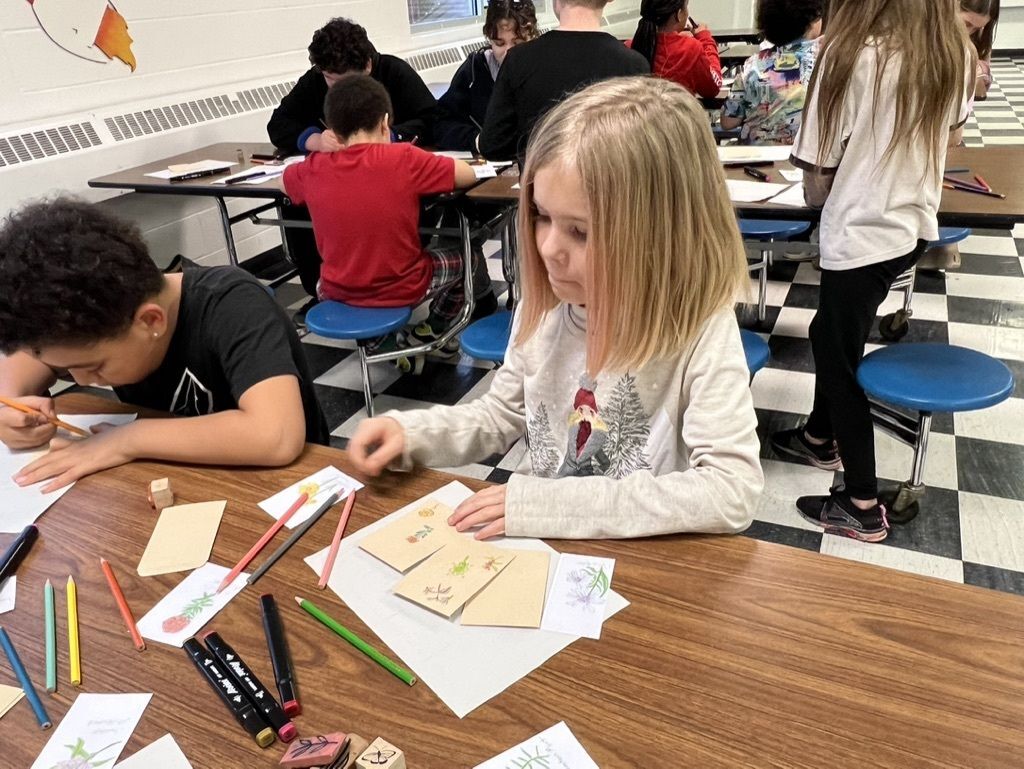
A student decorates native seed packets in our After School Program.
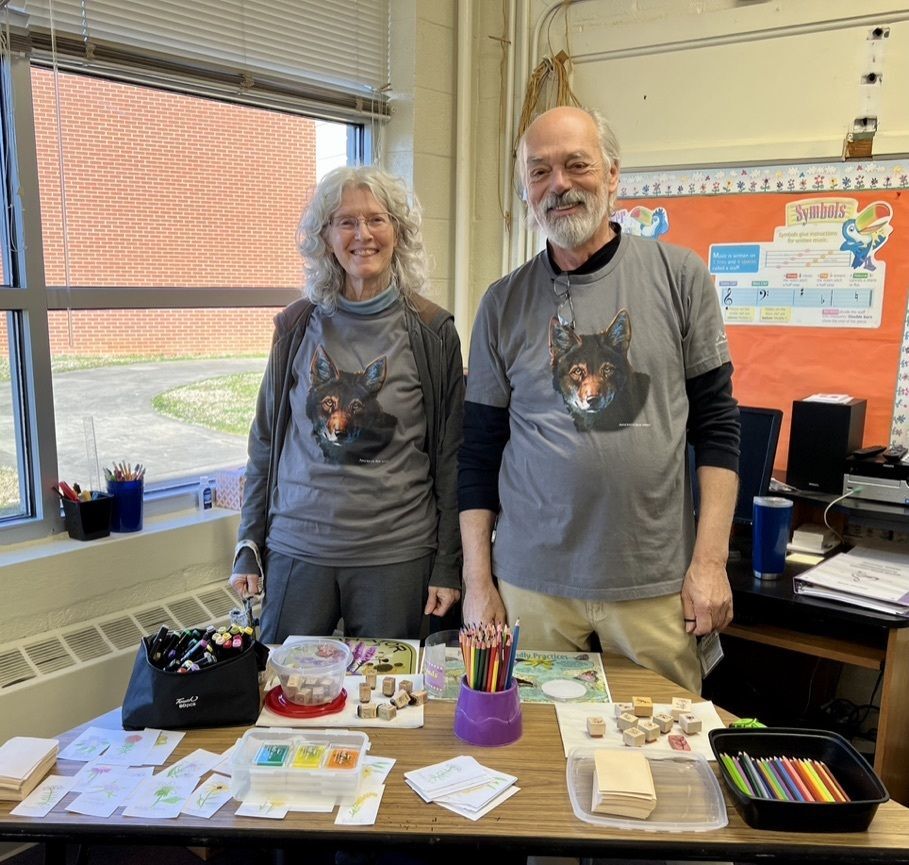
Karen Dacey & David Riddle get ready to help students decorate native plant seeds in our After School Program
And We Teach About Other Underdogs Too!
Hellbenders, bats, vultures and lots of other wildlife are underdogs. When invited to teach a class of fifth graders about hellbenders, we jumped at the opportunity.
Dale has just finished his hellbender sculpture so we bring it along. The kids love touching and studying it as they work on their art projects. Today they are designing t-shirts for a competition to raise money for stream restoration. The winning design? See below.
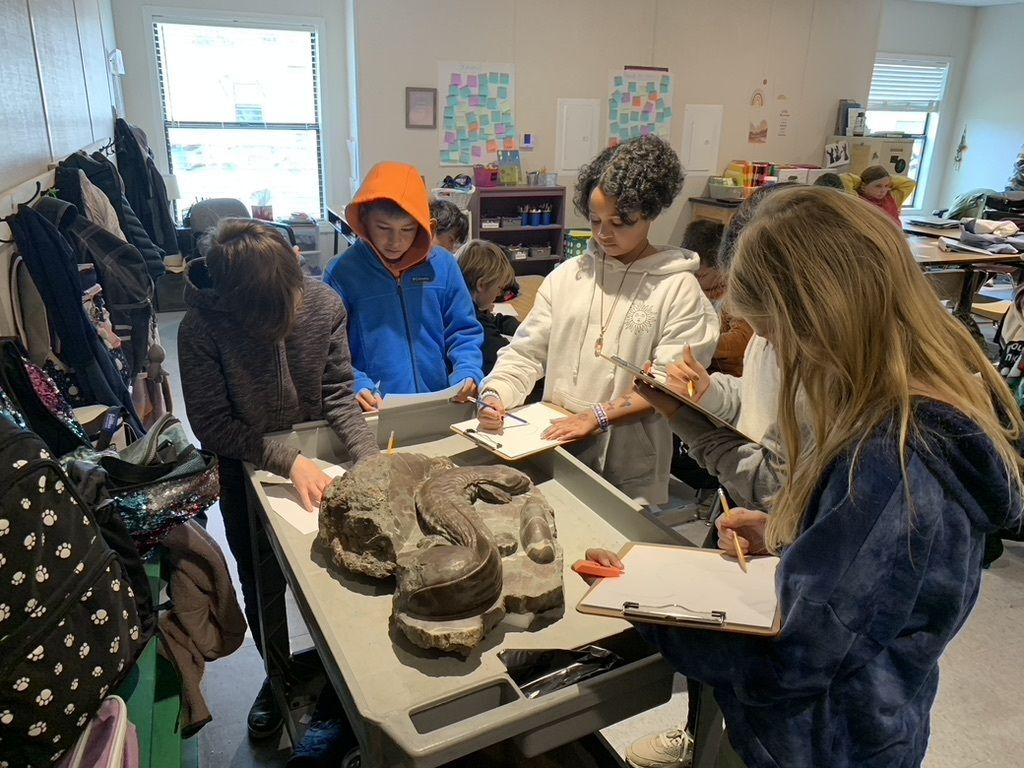
Fifth graders learn about hellbenders and hellgrammites
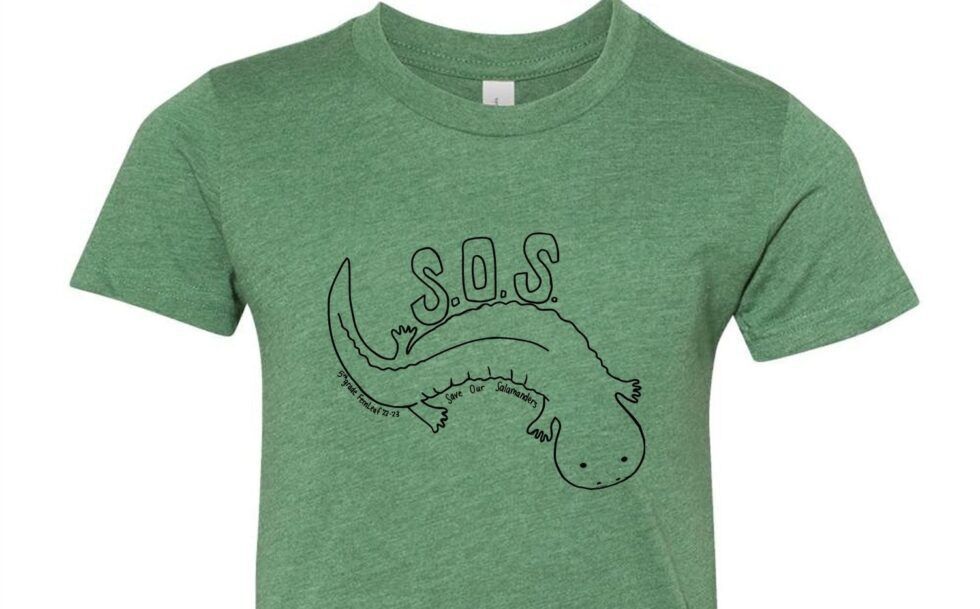
The winning t-shirt for hellbender conservation
If you’d like us to teach a class for you…
Educational programs for children are one of our most important initiatives. We are working with several local school systems and scout troops to develop curricula for endangered animals and how they positively impact our environment.
So calling all teachers. Let us know if you would like to get involved with helping us develop interactive lesson plans for grades K-12. Or if you’d like to get on our waiting list for a class. We would love to hear from you at loti@championsforwildlife.org!
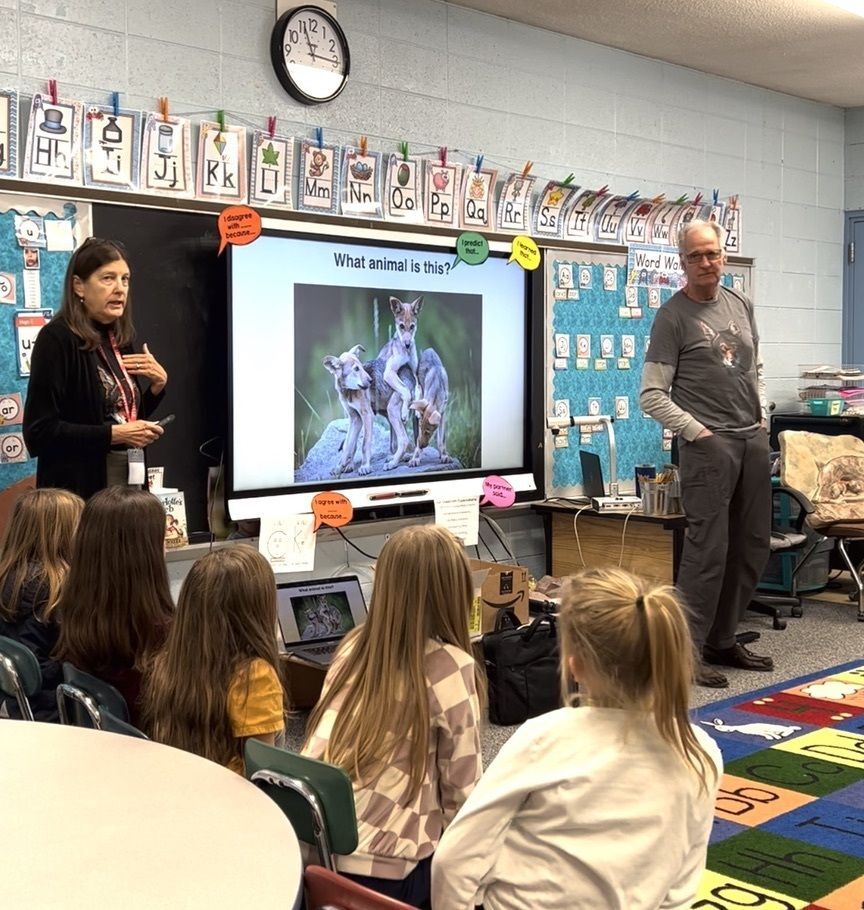
First graders learn about red wolves
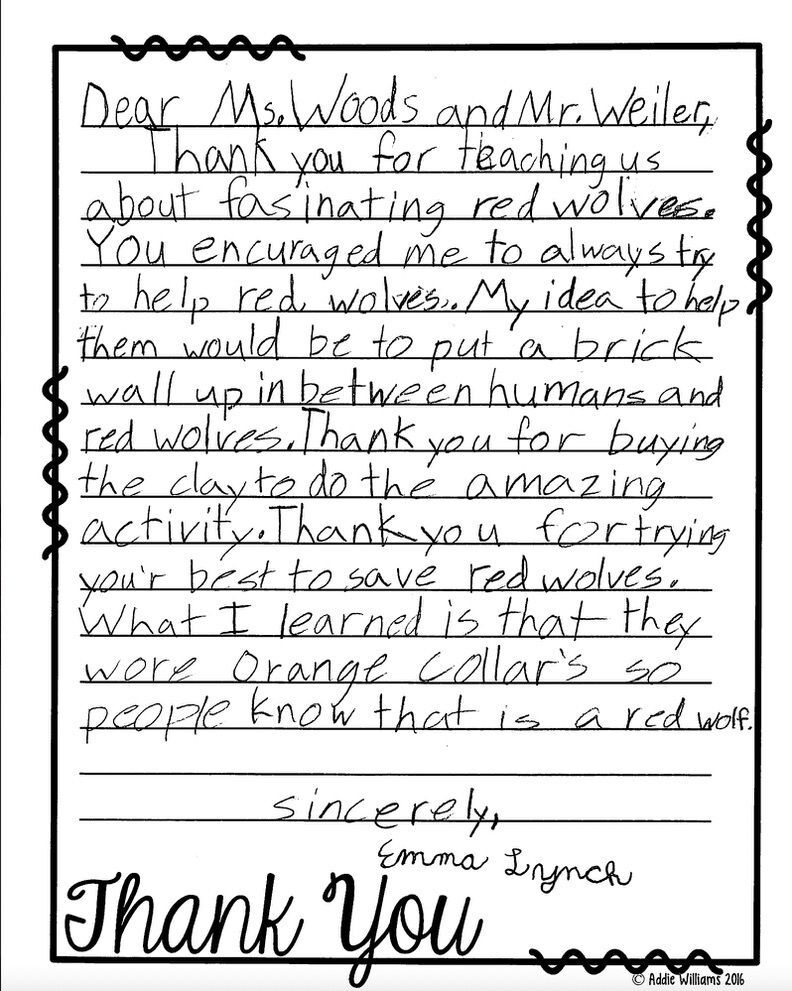
We Need Your Support!
Our education programs take volunteers and money. We would love to have you become a donor or volunteer. Or better yet, both!
A $100 donation buys art supplies for 40 children and each wildlife lesson includes art education. Just hit the donate button at the top of the page. To volunteer, complete our Volunteer Form.
See what one child wrote after our class. It just doesn’t get much better!
